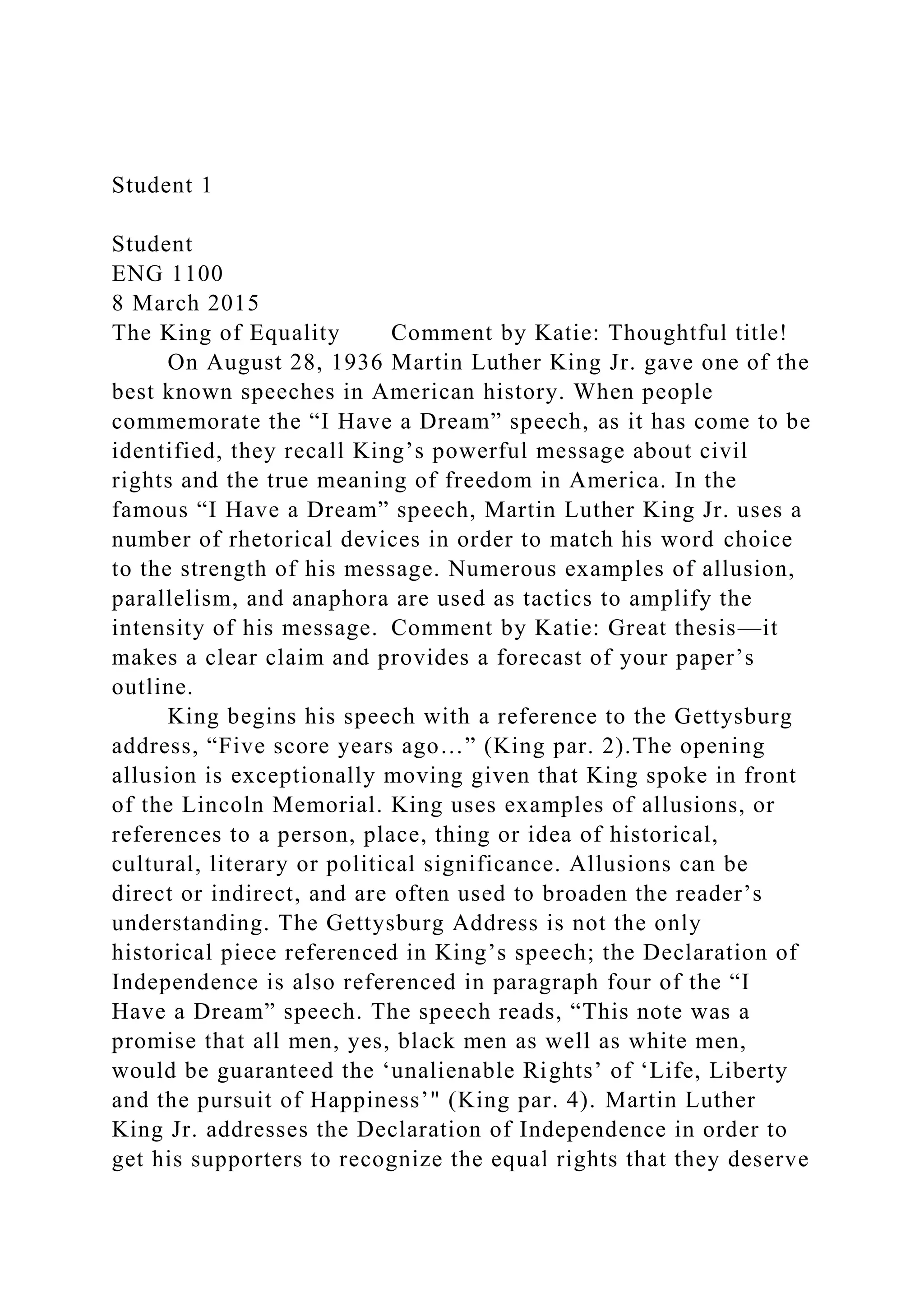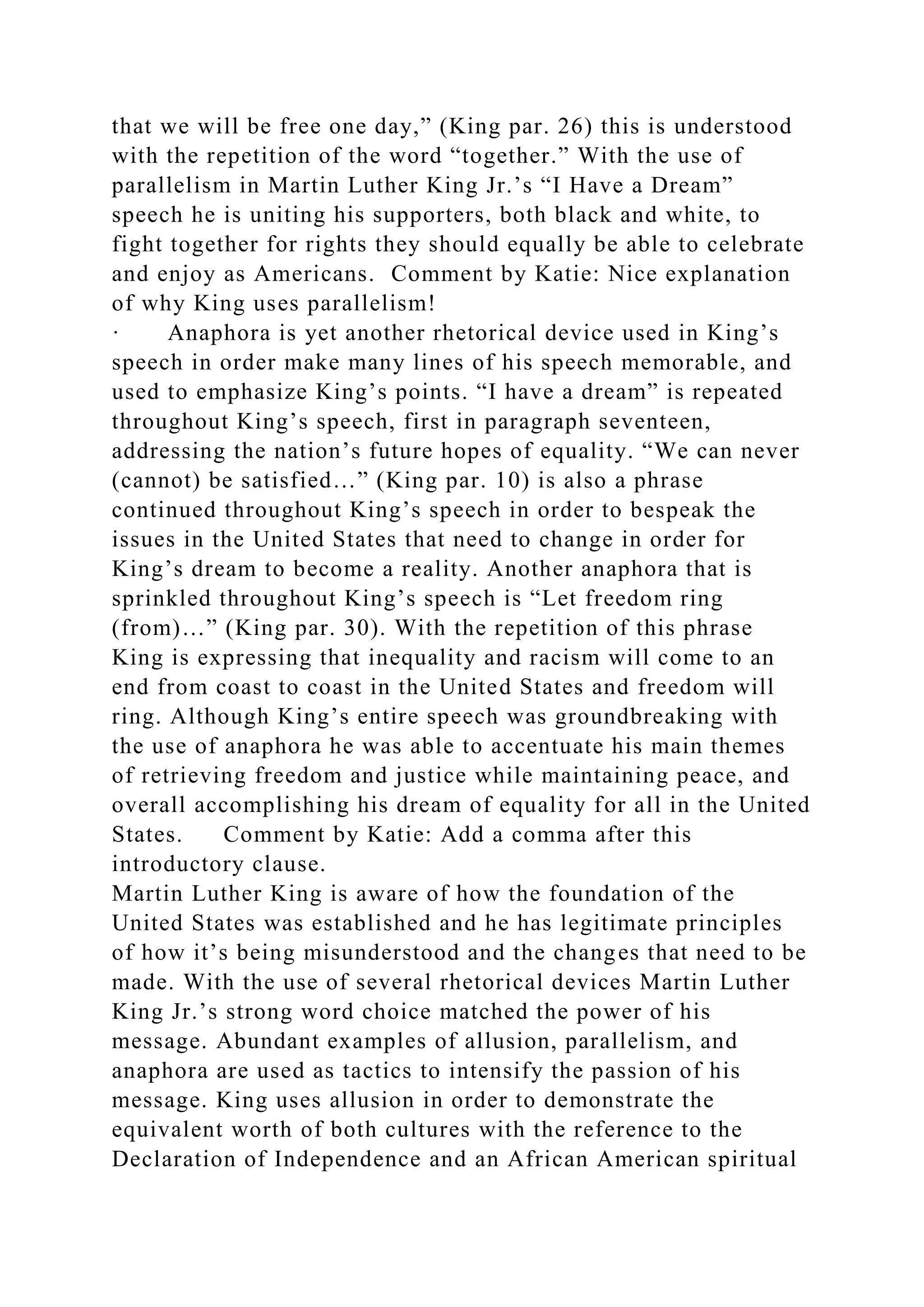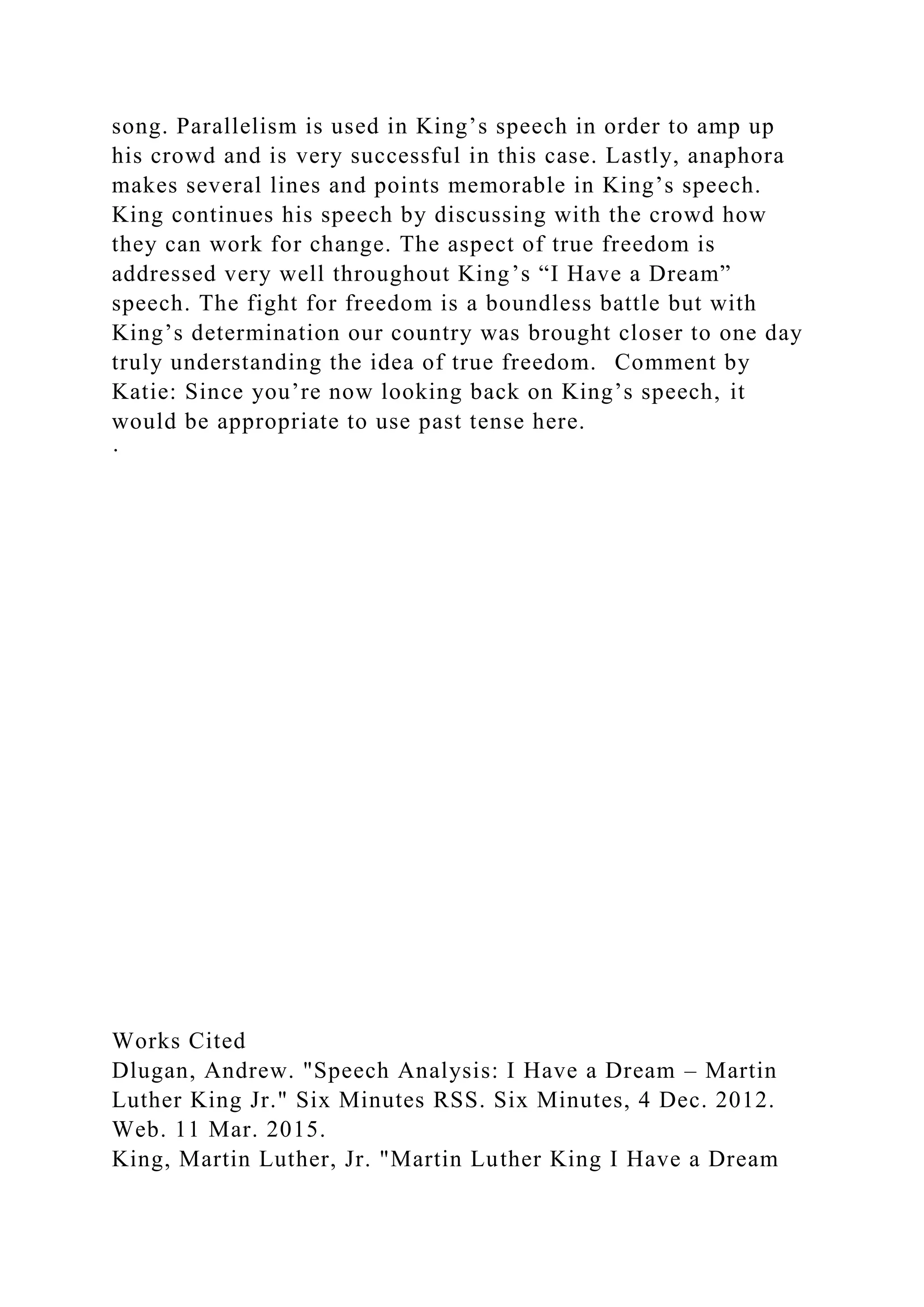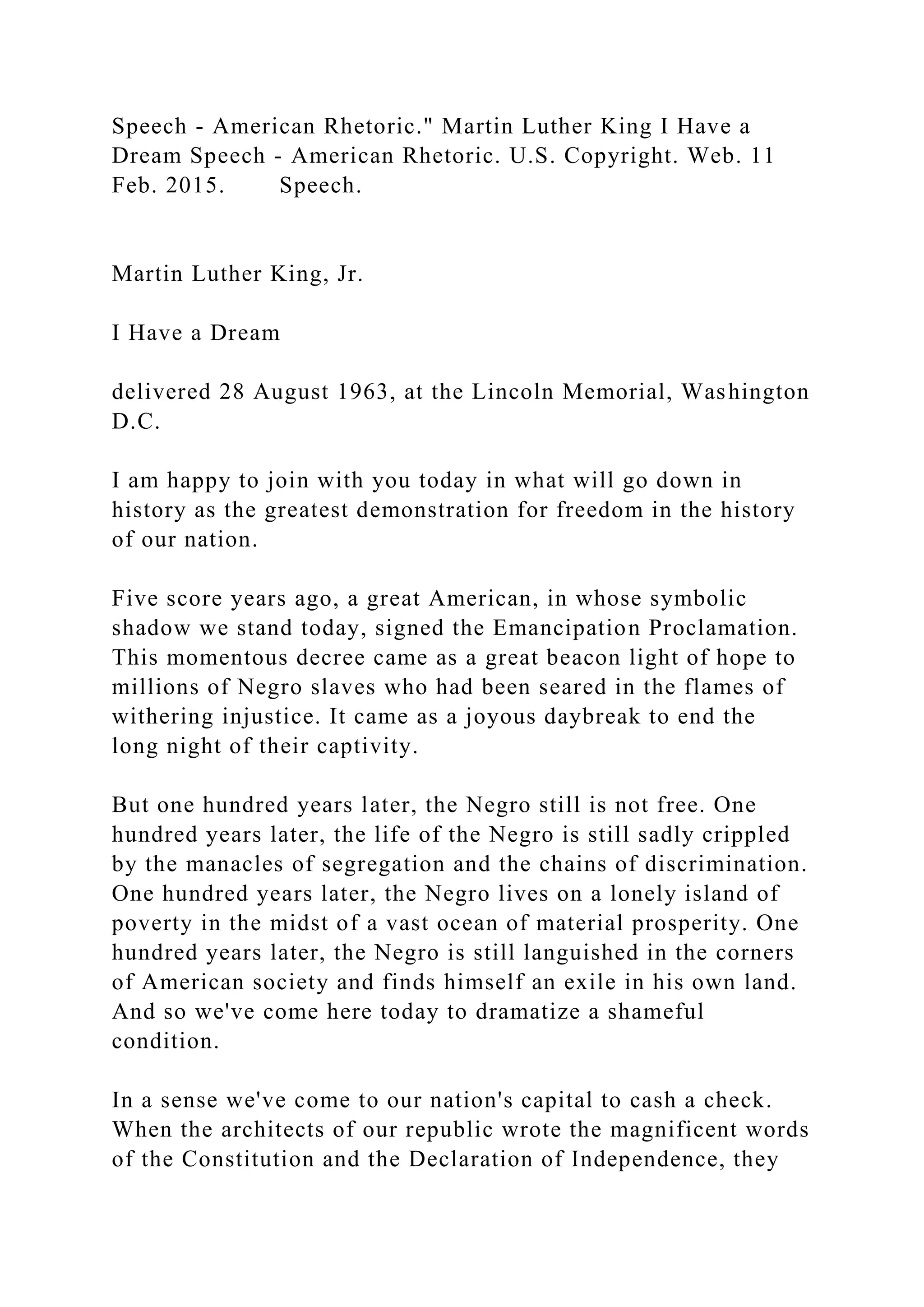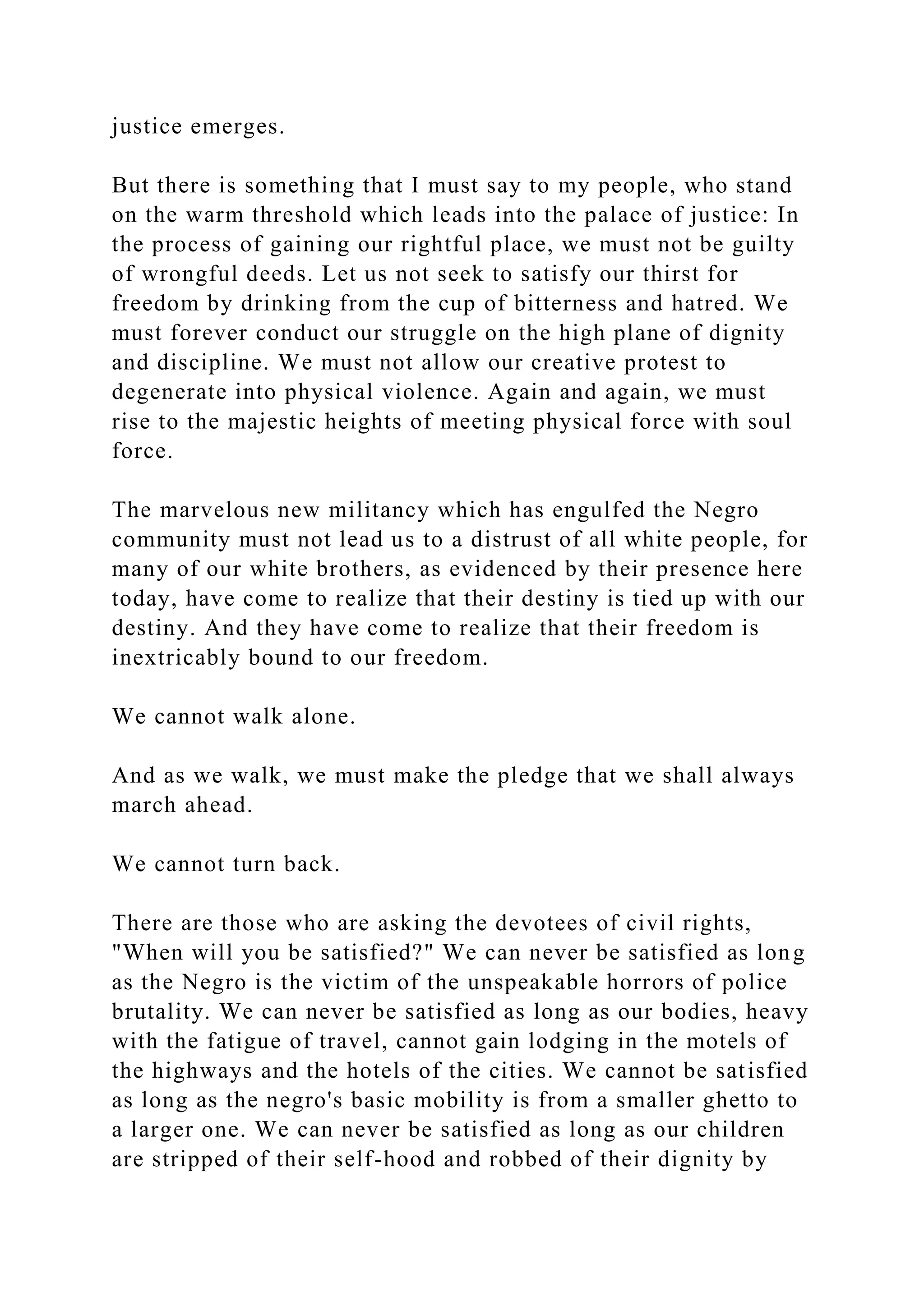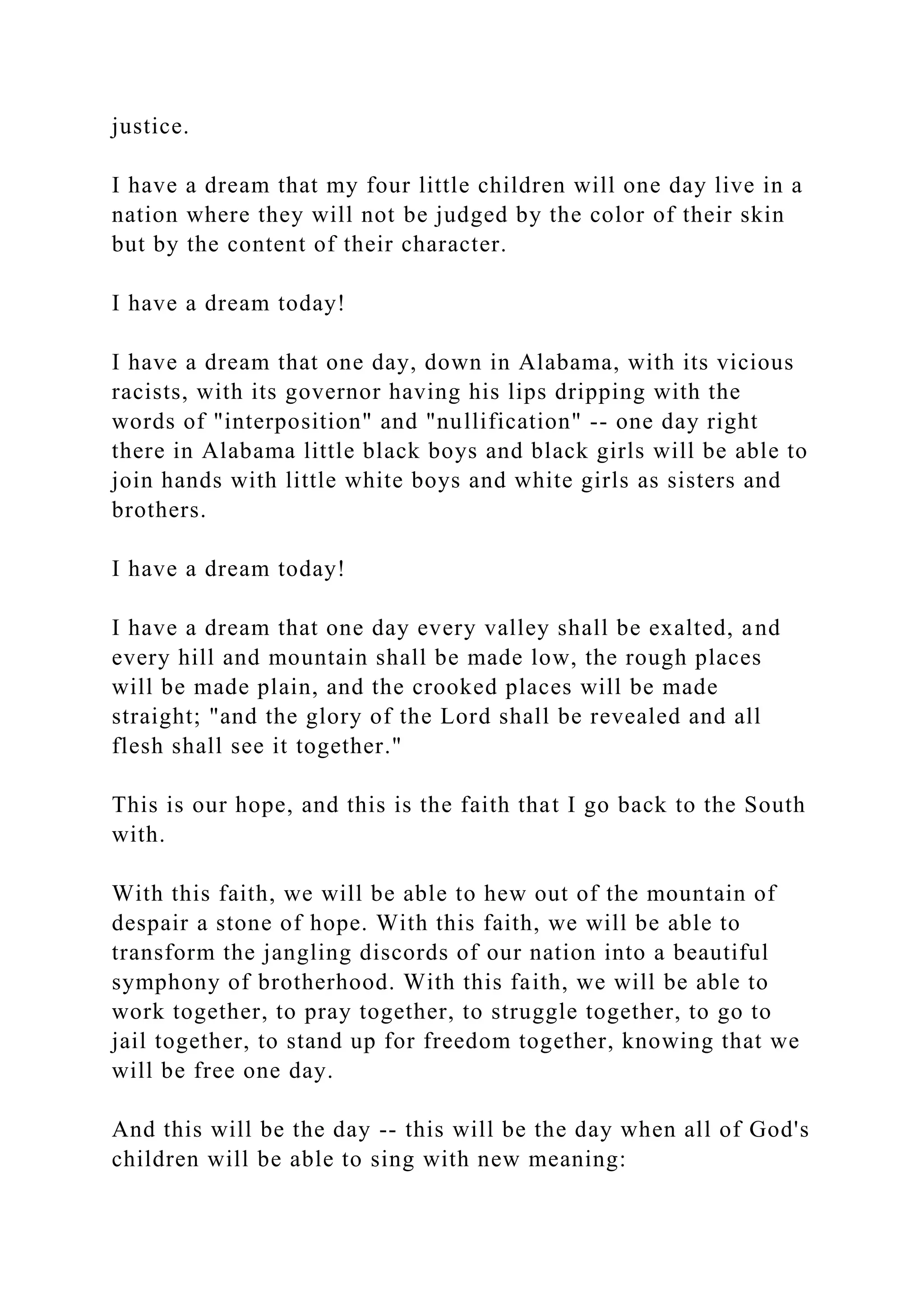The document discusses the significance of Martin Luther King Jr.'s 'I Have a Dream' speech, highlighting its use of rhetorical devices like allusion, parallelism, and anaphora to convey a powerful message about civil rights and the quest for equality. It provides examples of historical and biblical references that support King's plea for justice and unity among Americans. Overall, the analysis emphasizes how King's effective word choice and structure aim to inspire collective action for civil rights.
